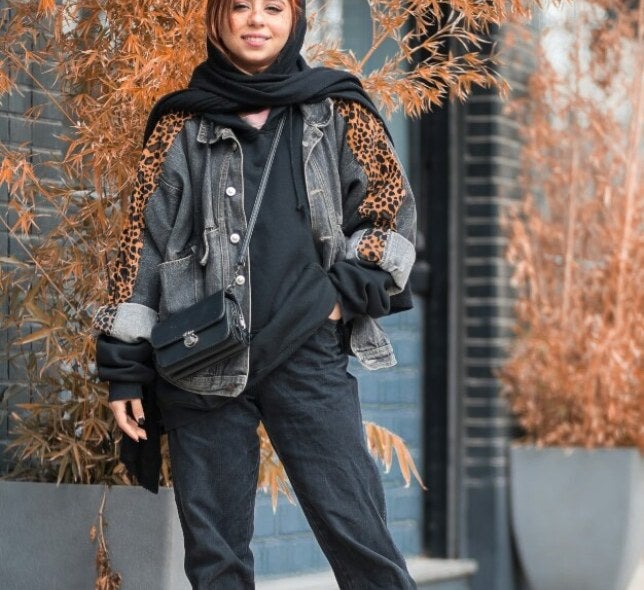As the public grows more aware of environmental and social issues, affordability remains a barrier to embracing sustainable fashion. Fast fashion is both abundant and cheap, often overshadowing the appeal of eco-friendly alternatives and practices.
But change is coming. Recognizing the growing movement toward sustainability, many companies are investing in research to create new techniques and technologies that lessen their environmental impact. We are closer than ever to a future with accessible and affordable sustainable fashion for all.
Why is sustainable fashion expensive?
Eco-friendly clothing can come with a higher price tag because many current sustainable production processes incur relatively higher costs.
Ethical Labor Practices
Fast fashion often exploits cheap labor in less-regulated environments, leading to lower prices and harmful labor practices. On the other hand, sustainable fashion embraces fair wages and humane working conditions. While this philosophy ensures a more socially responsible mode of production, it often contributes to higher overhead costs.
Eco-Friendly Materials
The materials used in sustainable fashion are another key contributor to its increased cost. Fabrics such as organic cotton, recycled polyester, or innovative alternatives like Tencel are pricier than conventional ones. The cultivation and processing of these materials often adhere to stricter environmental standards, adding to the total production expenses.
Sustainable Production Processes
Environmentally conscious production methods can be more intricate and resource-intensive than conventional practices. From low-impact dyeing to fabric recycling, these processes aim to minimize the ecological footprint but may be more expensive.
Certifications and Standards for Sustainability
Obtaining and maintaining certifications for sustainability comes with its own set of expenses. Brands committed to transparency and credibility invest in certifications like Fair Trade Certified and Global Organic Textile Standard (GOTS). While these certifications ensure adherence to specific sustainability standards, they add to the price of creating sustainable fashion.
How can we make sustainable fashion less expensive?
Breaking down the factors contributing to costs, it's evident that fair wages, eco-materials, and adherence to sustainability standards can raise the numbers on a price tag. However, there's hope on the horizon. As technology advances and supply chains become more efficient, affordable sustainable fashion is increasingly becoming the standard.
Higher Demand
The first key element in making sustainable fashion more affordable is increasing demand for eco-friendly products. As more consumers prefer sustainable options, economies of scale come into play. Brands respond to this surge in interest by scaling up their sustainable lines. Higher demand allows manufacturers to produce larger quantities, reducing production costs per item. Companies can then pass the savings on to consumers, making environmentally conscious choices more accessible to a broader audience.
To increase demand, fashion brands can promote consumer education about the true price of fashion and the long-term benefits of sustainable choices. By helping to shift consumers’ mindset, the fashion industry can create a larger market for sustainable products while also helping the environment.
New Techniques and Technology
Technological advancements are playing a pivotal role in reshaping the landscape of sustainable fashion. From innovative production practices to the development of alternative materials, technology is driving down expenses. For instance, breakthroughs in fabric recycling technologies and sustainable dyeing processes can significantly cut the overhead expenses traditionally associated with eco-friendly fashion.
As these technologies mature and become more widespread, the barriers to sustainable practices will likely decrease, allowing for a more affordable adoption of ethical and environmentally friendly production methods.
Efficient and Thoughtful Supply Chains
Efficient supply chains are another crucial factor in creating affordable, sustainable fashion. Streamlining fashion production, minimizing waste, and optimizing logistics all contribute to reducing overall costs. Sustainable fashion brands who strategically manage their supply chains can pass their savings on to consumers. Additionally, when feasible, local and decentralized production can further cut down transportation prices and carbon footprint.
By reimagining and restructuring supply chains, the fashion industry can take significant strides toward making sustainable options that are not just environmentally friendly but also economically viable for a broader consumer base.
LIM College - A Leader in Teaching Sustainable Fashion
Located in New York City, LIM College takes pride in our commitment to sustainable fashion education. Our faculty are industry experts who understand current trends in sustainability and can deliver knowledge on the latest best practices.
LIM College offers an in-person or online master’s degree in Global Fashion Supply Chain Management program that covers all components of the business cycle, from production to fulfillment. This STEM-designated one-year program provides courses on sustainable sourcing, providing in-depth insights into eco-conscious supply chains.
We also offer bachelor’s degrees in Fashion Merchandising that serve as a broad introduction into the world of fashion. These in-person and online programs offer business, fashion, and liberal arts courses, including classes in sustainability and the future of fashion. Additionally, our minor in Sustainability takes our commitment to preparing students to understand and promote ethical fashion practices in their own fashion careers even further, as undergraduate students in any major choose this minor.
At LIM College, you will learn from your professor’s real-life professional experiences, and build your skills as you complete required internships and participate in course-based industry projects and competitions. Join us on the journey to a sustainable future, guided by those actively leading the way.



